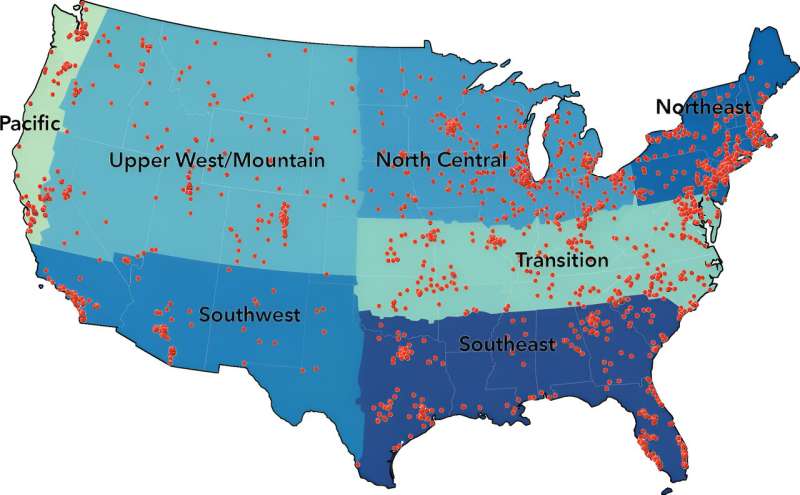This article has been reviewed according to Science X's editorial process and policies. Editors have highlighted the following attributes while ensuring the content's credibility:
fact-checked
peer-reviewed publication
trusted source
proofread
Research explores energy and land-use practices on US golf courses

In 2018, golf was estimated to contribute significantly to the US economy, generating $84 billion, supporting 2 million jobs, and providing $59 billion in compensation. Given its prominence, golf holds a valuable position within US culture. However, golf's operations, which inherently require expansive land and energy resources, can have environmental implications. Human behaviors and facility designs governing energy consumption play a crucial role in mitigating these impacts. Regular assessment of land use and energy practices is essential to accurately gauge the environmental footprint of golf facilities and to encourage the adoption of sustainable management practices.
A new study appearing in HortTechnology evaluates energy practices and use of land on US golf courses.
Energy usage on US golf facilities was first assessed in 2008 and then reevaluated in 2015. The findings showed that over 99% of golf facilities continued to use gasoline and diesel fuel, with no significant change from 2008 to 2015. However, there was an increase in the percentage of facilities implementing behavioral or design changes aimed at conserving energy during this period. Additionally, there was a rise in the adoption of written energy plans and the conduct of energy audits among golf facilities between 2008 and 2015. These findings indicate that US golf facilities are actively engaging in practices to conserve energy
Surveys on land-use and energy practices have been crucial for education and advocacy. Findings from the 2005 and 2015 surveys showed that reducing environmental risks wasn't solely due to facility closures, which are beyond turf grass managers' control, but also from voluntary reductions in maintained turf grass.
Between 2005 and 2021, there was a decrease in median total maintained turf grass acres on 9- and 18-hole facilities. However, there was an increase in median maintained turf grass area on 27+-hole facilities, rising from 142.7 to 167.5 acres. This increase was driven by expansions in greens, tees, fairways, and roughs, with the largest contribution occurring in roughs (17.1 acres). Conversely, the decrease in turf grass acres on 9-hole and 18-hole facilities was observed mainly in fairways, practice areas, nurseries, and grounds sites.
Since 2005, golf facilities have maintained their median facility area but have decreased the median area of maintained turf grass while also reducing the area of impervious surfaces. This suggests that golf facilities, whether driven by compulsory regulations or voluntary actions, have implemented changes consistent with best management practices of land-use aimed at minimizing environmental impact.
Golf facilities have shown a trend towards integrating cleaner energy sources into their operations, demonstrated by a decrease in facilities using gasoline and diesel and an increase in those using natural gas and solar-electric energy sources. From 2005 to 2021, they have also become more land and energy efficient by reducing maintained turf grass acreage and increasing clean energy utilization. However, opportunities for improvement persist, particularly in addressing human behaviors that impact energy use.
More information: Travis W. Shaddox et al, Land-use and Energy Practices on US Golf Courses, HortTechnology (2023). DOI: 10.21273/HORTTECH05207-23
Journal information: HortTechnology
Provided by American Society for Horticultural Science



















